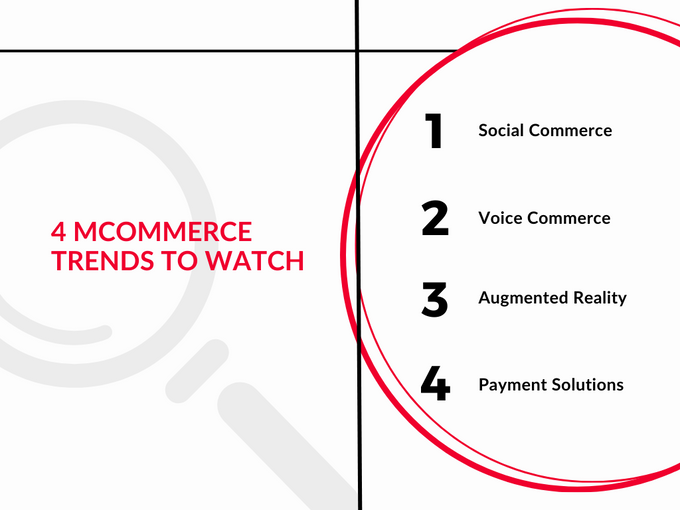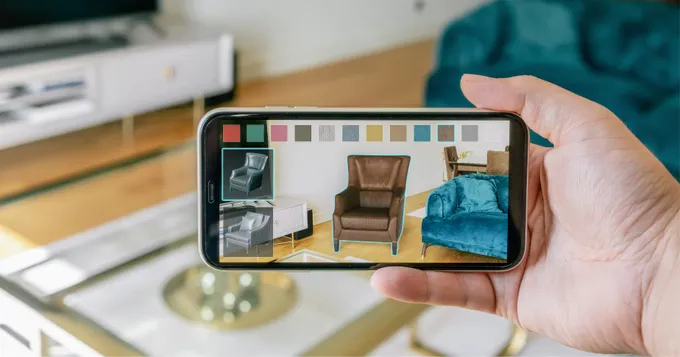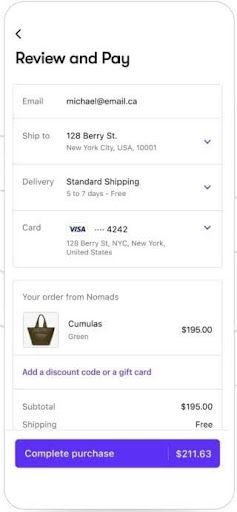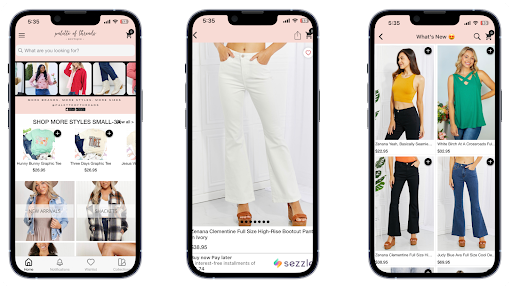4 mCommerce Trends to Take Your Business Further in 2024
Security, social media, multimodality—these are the keys for mCommerce this year.
Updated November 19, 2024.
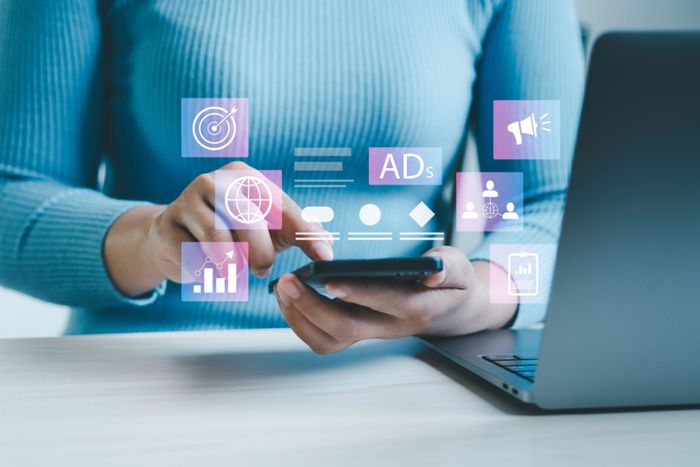
Mobile commerce, or mCommerce, refers to purchases made using a smartphone or tablet. This type of online shopping already comprises roughly 44% of all eCommerce sales—a number expected to rise to 50% by 2027. In other words, every second online purchase will be via smartphone very soon.
With mobile sales alone expected to surpass the $500-billion mark in 2024, you should aim to be right there on the mCommerce trend train. But with so many ways to optimize your mobile commerce strategy, which trends should you focus on to reap rewards?
This year, mCommerce will advance with:
- Increased adoption of social commerce
- Growing popularity of voice commerce
- Widespread use of augmented reality
- Efficient payment solutions and mobile wallets
Let's review these trends in more detail. And if you're just starting out, we'll look at how you can better optimize the entire mCommerce experience to keep shoppers coming back.
Meet the Expert
Jameela Ghann is an eCommerce and marketing expert with over 10 years of experience. Apart from running her own successful online store, Alora Boutique, she's the marketing manager of Fera.ai.
4 mCommerce Trends to Watch
Increased Adoption of Social Commerce
Social commerce is different from eCommerce in that customers can buy directly through one of the social media apps like:
- TikTok
- Snapchat
- YouTube
- Twitch
- X (previously known as Twitter)
Social commerce can be a very effective strategy. For example, during a testing phase of product pins on Pinterest, users displayed 70% greater shopping intent than on standalone pins.
Brands like Sephora, MAC, Levi's, Natori use social media platforms to create shopping posts, do live product reviews, or make quizzes and engage the audience. They saw significant increases in organic traffic, ad spend return, purchase intent, and sales after social media marketing.
On top of these, the right UGC strategy is always a great addition to your overall social media efforts.
Social Media Funnel to Search-Optimized Mobile App
If you opt for a social media funnel instead of in-app purchases on social media, then a fast-functioning mobile app is a must.
Princess Polly clothing store solved this by using Fast Simon & Tapcart integration to ensure a high-quality search on the mobile app.
» Turn followers into customers? Read more about the rise of social commerce.
Growing Popularity of Voice Commerce
Voice commerce, or V-commerce, uses voice commands to search for and buy products through smartphones and apps like Siri, Alexa, and Google Assistant.
When your customers are on the go, voice commands are easier than typing. Nearly half of US shoppers say they use voice assistants for shopping because it's easy and fast. So this trend is expected to become very important in the upcoming years, especially when coupled with AI personalized product recommendations.
Businesses are already preparing and implementing voice-shopping solutions.
Platforms like Fast Simon can optimize your site for voice search with natural language keywords and structured data to appear in voice search results.
Widespread Use of Augmented Reality
More brands use AR to showcase their products and make it easier for customers to see what the products look like in real life, or compare prices with similar items.
Augmented Reality (AR) brings interactivity into the shopping experience and engages the buyers. It also saves time, decreases the number of returns, and boosts the conversion rates.
You can host virtual tours, clothing and makeup try-ons, price comparisons, and coupon popups with AR technology.
Efficient Payment Solutions and Mobile Wallets
Mobile offers safe and convenient ways to pay and more shoppers are looking to buy straight from their phones. You can introduce contactless payments, QR codes, or biometric authentication to make transactions faster, easier, and more secure.
Before going into trends, however, enable support for multiple payment platforms, like PayPal, Stripe, different credit and debit cards, cryptocurrencies, or maybe even installment payment solutions.
Shop Pay Is One of the Best Checkout Functions
Shopify Checkout with Shop Pay is built to perform both on desktop and mobile checkouts. The function lifts conversions by up to 50% relative to guest checkouts. It also outpaces other accelerated checkouts by at least 10%.
How to Optimize Your Mobile Commerce Platforms
Optimizing your strategies for mobile lays the groundwork for adopting these mCommerce trends. If you have a well-designed mobile design, your customers will enjoy consistency and familiarity in their entire shopping experience.
The top two priorities would be:
Ensuring your website and app are designed with best practices for mCommerce merchandising in mind. Prioritize responsive design, fast loading times, and intuitive navigation for mobile users.
Having a streamlined checkout process with features like guest checkouts, saved payment information, and multiple payment options. Reducing friction at this stage can significantly boost conversions.
Also, consider optimizing your site for voice search with natural language keywords and structured data to appear in voice search results.
Authentication and Security
More eCommerce and mCommerce stores are using the following methods to ensure platform security and boost customer trust:
- Multi-Factor Authentication (MFA): Requires users to provide at least two forms of authentication, such as a password and a one-time code.
- End-to-End Encryption: Encrypts data both in transit and at rest so that only the sender and receiver can access it.
- Fraud Detection Systems: These systems use a variety of data points, such as IP addresses, device fingerprints, and purchase history, to identify potential fraud and block it.
mCommerce Can Boost KPIs
The boutique Palette of Threads decided to present its offer via mobile app. Switching to mCommerce led to:
- 20% increase in conversions
- 2x increase in online sessions
- 56% increase in average order value
- 73% mobile app contribution to overall revenue
mCommerce Trends for Sustained Growth
The current mCommerce trends are hardly just fads. They're the foundation upon which mCommerce will develop in the upcoming years.
Businesses can prepare by understanding the trends, adopting them, and staying at the forefront of new digital solutions.
This way, they'll create more value for customers, and be ready when today's new tools become future mainstream.

